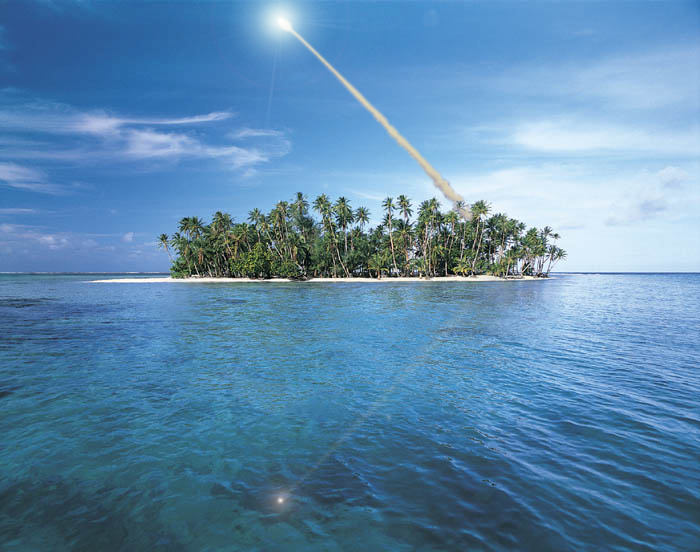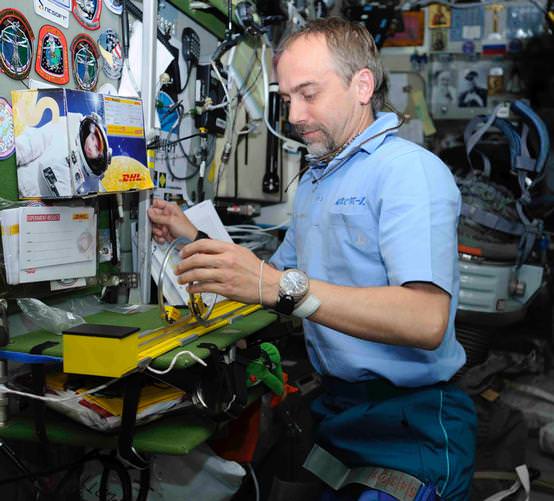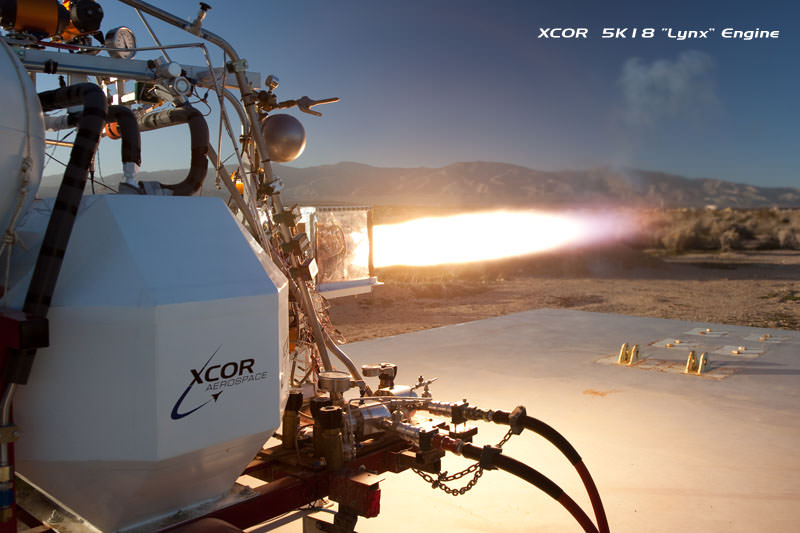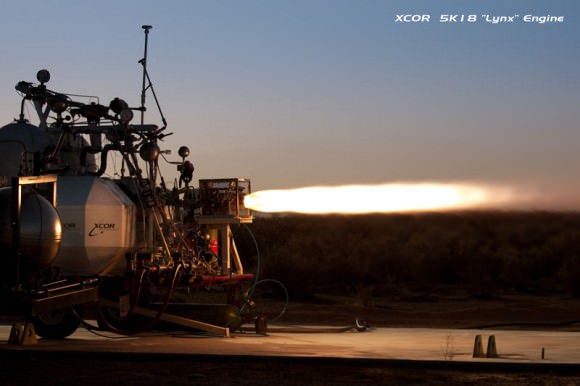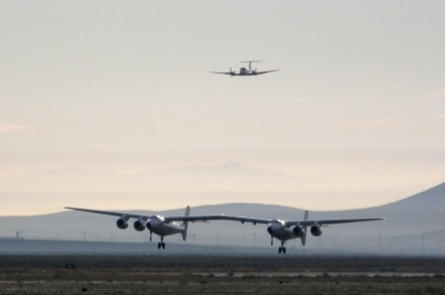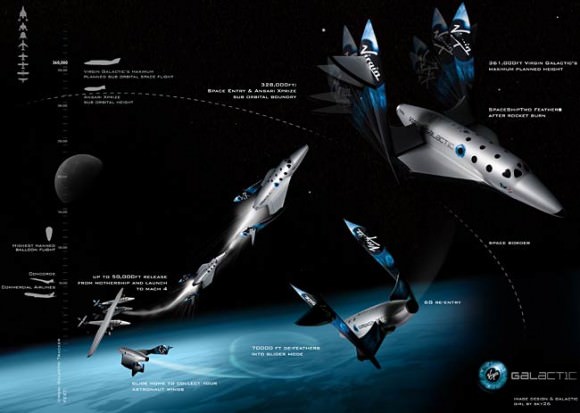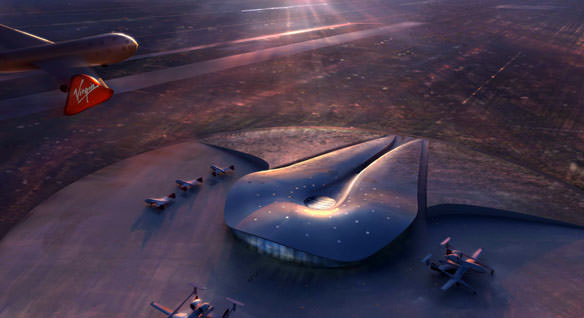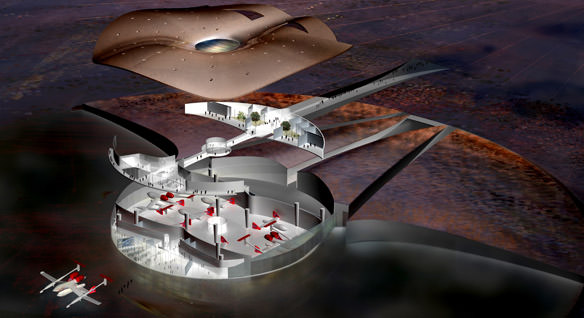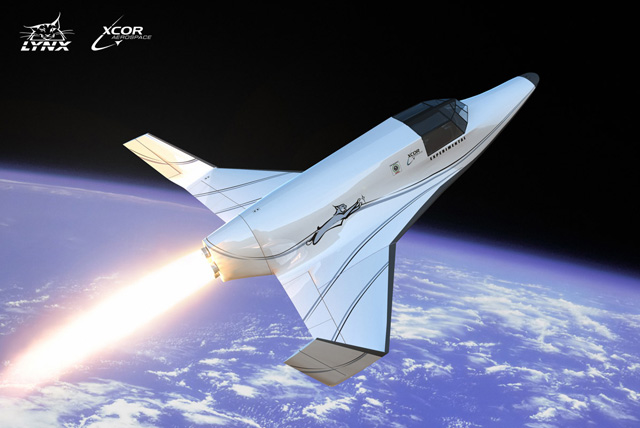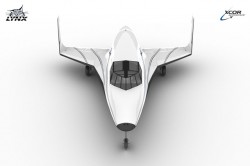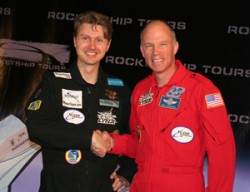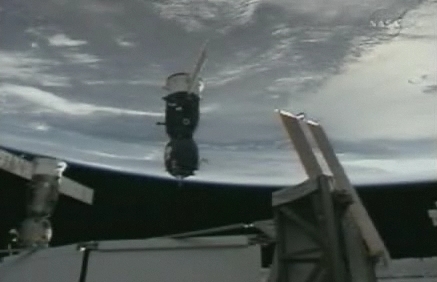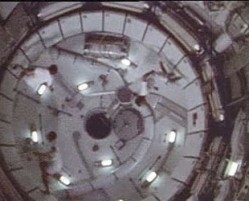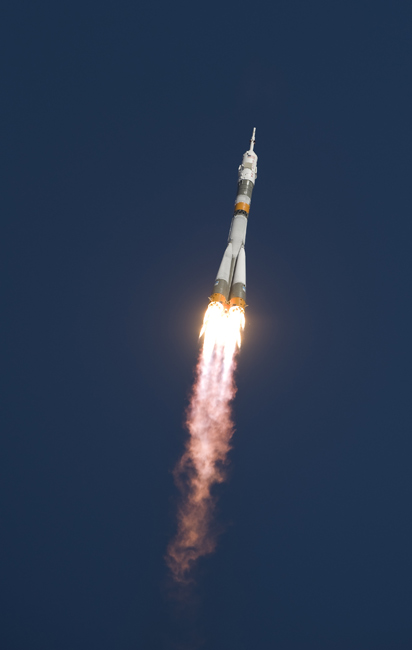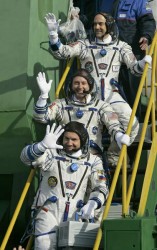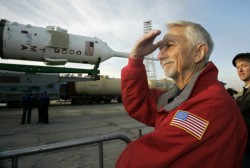[/caption]Private spaceflight companies seem to be getting closer and closer to the dream of launching a new breed of tourist on sub-orbital sightseeing tours. Since the late ’90’s the company Space Adventures has been sending millionaires on “trips of a lifetime”, but their most popular destination, the International Space Station, will stop hosting spaceflight participants at the end of this year as the Russian Soyuz spaceship wont have any more spare seats (as the crew on the station increase from three to six).
However, there are other private spaceflight companies beginning to realise the profits that could be made in space, not by dropping people off on the space station, but by launching them on short sub-orbital joyrides. They are building their own spaceships and even before the first rocket has ignited, there is growing competition for a piece of the space tourism market. Ticket prices have tumbled from the tens of millions (for a few days in orbit) to $200,000 (for a couple of hours on board a Virgin Galactic flight) to $95,000 (on board XCOR’s Lynx spaceplane for 30 minutes).
So, where should these companies launch their space tourists from? Although the space above the Mojave and New Mexico deserts are likely to be thundering to life within the next few years, a slightly more exotic destination is currently vying for a position in this burgeoning industry. Hawaii could be perfectly located not only for suborbital tourism, but for a revolution in global travel…
“Space tourism is the next generation of humankind reaching for the stars,” said Jim Crisafulli, of the Hawaii State Office Aerospace Development.
The official is obviously referring to the conventional take-off and landing spaceplane designs by the likes of Rocketplane Global’s XP Vehicle and XCOR Aerospace’s Lynx. The XP, for example, uses conventional aircraft jet engines to attain a certain height and then the onboard rocket engine takes over, quickly taking the passengers to an altitude of 100km, allowing a few minutes of weightlessness. Judging by the Hawaii news source, the Hawaii officials appear to be referring to Rocketplane Global, as the online video shows an animated movie of the XP taking off much like a conventional jet.
“What these are, are basically converted jet aircraft that take off and land at airports like normal jet aircraft. But once they get up to about 30,000 feet fire a rocket at the back of the plane, and this will take it up 62 miles,” Crisafulli added.
However, before you get caught up in dreams of sipping your Mai Tai on the beach, watching the palm trees sway with deep blue Pacific water lapping the golden sands of Maui, only to see a spaceplane rip through the skies, the Hawaii authorities have to justify the cost of an expensive Federal Aviation Administration (FAA) licence to allow a Hawaii spaceport.
Although tickets to space are getting cheaper, the first flights will still be expensive. After all, who has nearly $100,000 to $200,000 to spend on a short suborbital flight? However, optimistic estimates place a price of $5,000 per ticket in 5-7 years when these spaceplanes are bigger, carrying up to 100 people into space.
“I know that’s still a little pricey, but to be able to experience space in the process is just tremendous and we think there will be a fairly significant market for this,” said Crisafulli.
Apparently four US spaceflight companies have approached Hawaii with requests to do business in the centre of the Pacific Ocean, so it appears the space visionaries think there is money to be made in this exotic location.
There may also be another, more practical reason for pushing to gain FAA approval for suborbital flight; it could revolutionize transportation to and from the isolated US state. “Having a flight from Hawaii to California maybe take 1 hour or 90 minutes, and a flight from Hawaii to Japan could take less than an hour,” said Senator Will Espero.
Source: KHON2

